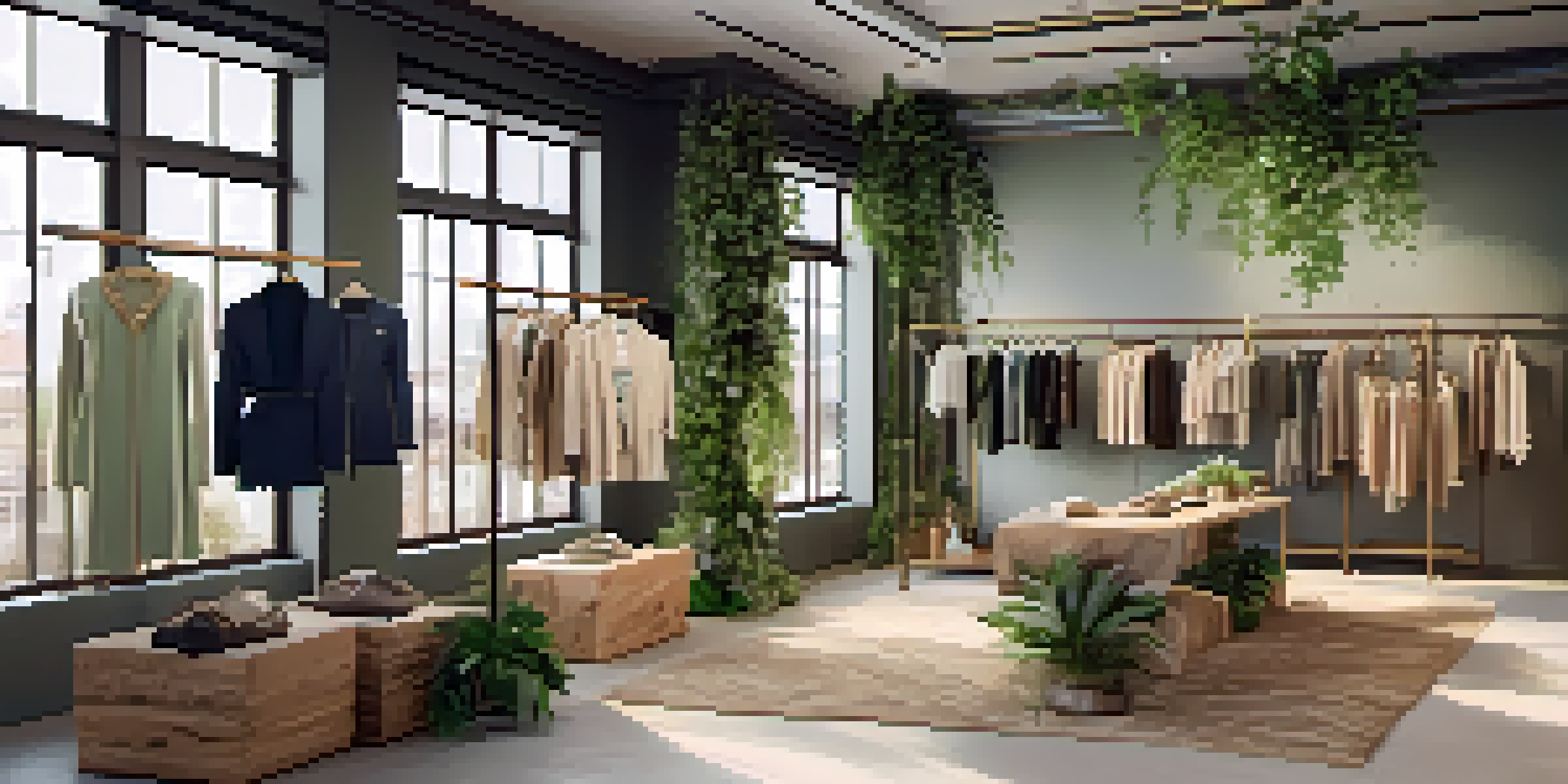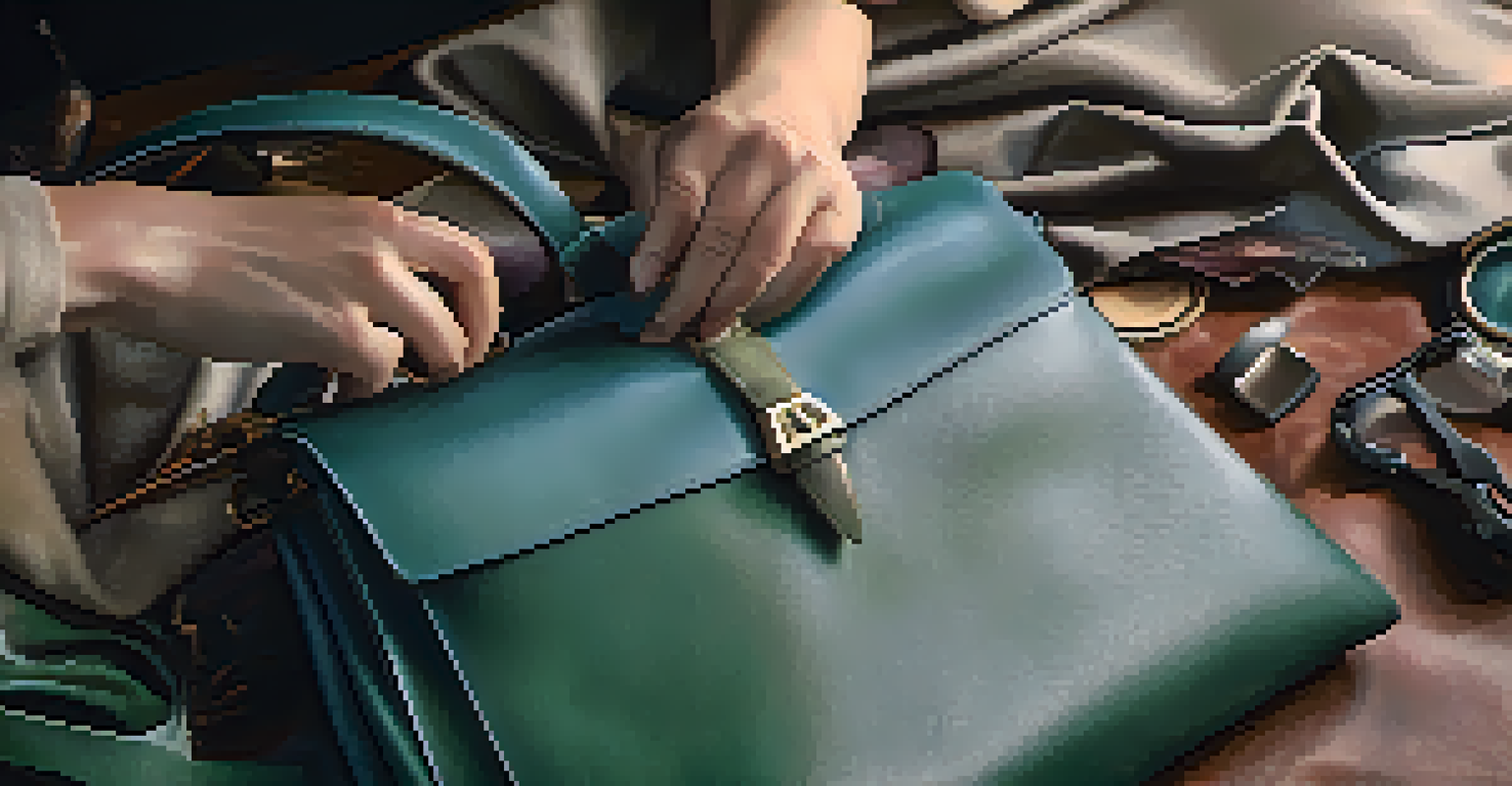Luxury Brands and the Circular Economy: A New Paradigm

Understanding the Circular Economy Concept
The circular economy is an innovative model that shifts away from the traditional linear approach of 'take, make, dispose.' Instead, it focuses on reusing, recycling, and refurbishing products to extend their lifecycle. This system not only conserves resources but also minimizes waste, aligning perfectly with the sustainability goals many luxury brands are now adopting.
The future will be green, or not at all.
Imagine a world where products are designed with their entire lifecycle in mind; from how they're made to how they can be reused or recycled. This paradigm shift encourages companies to think beyond just profit and consider their environmental impact. For luxury brands, which often emphasize craftsmanship and quality, this can create a deeper connection with their customers who value sustainability.
As the world increasingly prioritizes environmental responsibility, the circular economy offers luxury brands a way to not only enhance their brand image but also attract a more conscious consumer base. This evolution signifies a promising future where luxury and sustainability can coexist harmoniously.
Luxury Brands Leading the Way in Sustainability
Many luxury brands are stepping up to the plate, showcasing how sustainability can be elegantly woven into their identity. For instance, brands like Stella McCartney have long championed eco-friendly practices, proving that high fashion doesn’t have to come at the expense of the planet. By using sustainable materials and transparent supply chains, these brands set a benchmark for others in the industry.

This commitment to sustainability often involves innovative practices such as upcycling materials, utilizing organic fabrics, and implementing closed-loop systems where products are designed for future reuse. It’s a refreshing take that not only preserves the luxury essence but also contributes positively to the environment.
Circular Economy Enhances Luxury Appeal
The circular economy model allows luxury brands to extend product lifecycles while aligning with sustainability goals, creating deeper connections with eco-conscious consumers.
Moreover, luxury brands that embrace sustainable practices can foster a loyal customer base that values ethical consumption. This shift is not just a trend but a significant movement towards a more responsible future in fashion.
Consumer Demand for Sustainable Luxury
Today’s consumers, particularly millennials and Gen Z, are increasingly making choices based on a brand's sustainability efforts. They want to invest in luxury items that not only speak to their personal style but also reflect their values. This shift in consumer behavior is compelling luxury brands to rethink their strategies and align them with sustainability.
Sustainability is no longer about doing less harm. It's about doing more good.
For example, when a luxury brand promotes its use of recycled materials or commits to reducing carbon emissions, it resonates deeply with eco-conscious consumers. This demand for transparency and responsibility is no longer optional; it has become a vital part of brand loyalty and customer engagement.
As a result, luxury brands that can effectively communicate their sustainability initiatives stand to gain a competitive edge in the market. This evolution represents a profound change in how consumers perceive and interact with luxury goods.
Challenges Luxury Brands Face in the Circular Economy
Transitioning to a circular economy isn't without its hurdles, especially for luxury brands that have traditionally focused on exclusivity and high margins. One of the main challenges is sourcing sustainable materials without compromising on quality. Balancing sustainability with the luxurious feel customers expect can be a tricky tightrope to walk.
Additionally, luxury brands often grapple with the perception that sustainable products might lack the allure of traditional luxury items. Overcoming this stereotype requires innovative marketing strategies that highlight the elegance and desirability of sustainable choices.
Sustainability Drives Consumer Choices
Today’s consumers, especially younger generations, prioritize brands that demonstrate strong sustainability efforts, influencing luxury brands to adapt their strategies accordingly.
Lastly, integrating circular economy principles into existing business models demands a significant overhaul of operations, which can be resource-intensive. However, overcoming these challenges is crucial for brands looking to secure their place in a future where sustainability is paramount.
Innovative Practices in Luxury Sustainability
Luxury brands are utilizing cutting-edge technologies to promote sustainability, such as blockchain for transparency in sourcing and manufacturing. By providing customers with detailed information about the journey of their products, brands can foster trust and loyalty. This technological integration not only enhances brand reputation but also aligns with the principles of the circular economy.
Additionally, some luxury brands are experimenting with rental and resale models, allowing customers to enjoy high-end products without the full investment. This not only promotes a circular economy but also caters to the growing trend of sharing and reusing rather than owning.
Such innovative practices signal a shift in how luxury is perceived—no longer just about ownership but about experiences and the responsible enjoyment of luxury goods.
The Role of Collaboration in Sustainable Luxury
Collaboration plays a crucial role in advancing the agenda of sustainability among luxury brands. By partnering with environmental organizations, other brands, or even startups specializing in sustainable practices, luxury brands can pool resources and knowledge. This collective effort can lead to more significant advancements and a more substantial impact on the industry as a whole.
For instance, collaborations aimed at creating limited-edition sustainable collections not only excite consumers but also demonstrate a commitment to the circular economy. These partnerships can enhance brand visibility and show that luxury can be a leader in sustainability.
Collaboration Fuels Sustainable Innovation
Partnerships between luxury brands and environmental organizations help drive sustainability advancements through shared resources and innovative practices.
Moreover, by sharing best practices and resources, brands can drive innovation faster. This collaboration ultimately benefits not only the brands involved but also the planet.
Future Outlook: Luxury and the Circular Economy
The future of luxury brands in the context of the circular economy looks promising as consumer expectations evolve. We can expect to see more brands adopting sustainable practices, with many possibly committing to circularity in their business models. This shift will likely redefine luxury, emphasizing the value of sustainability alongside quality and craftsmanship.
As the industry adapts, it will be exciting to see how luxury brands innovate to meet these new standards. From sustainable sourcing to product take-back programs, the possibilities are endless, and they will lead to a richer, more responsible luxury experience.

Ultimately, the intersection of luxury and sustainability signifies a new era where luxury brands can thrive while also prioritizing the health of our planet. This paradigm shift is not just a trend; it’s a fundamental change in how luxury is defined and experienced.